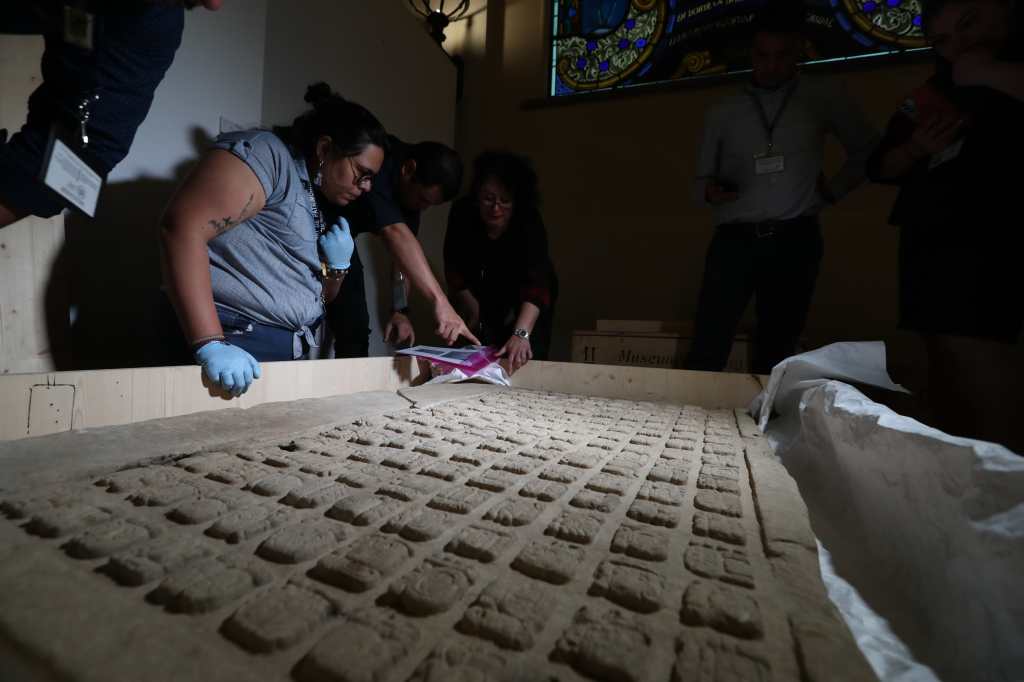In 2023, it will be introduced in the United States Maya: Exhibition (Maya: Fair) also known as Maya: Rise of the Great Jaguar (Mayas, El Gran J.aguar Asciende) opened on April 2, 2023 and closed on September 30 at the California Science Center, located in Historic Exposition Park, in Los Angeles, California.
It was carried out by German Nikolai Grube, who holds a doctorate in cultural anthropology from the University of Hamburg. It contains 245 pre-Hispanic and 35 ethnic objects, including textiles, masks, musical instruments and more.
The exhibition represents the heyday of the ancient Maya civilization around the year 600 AD, and the achievements and knowledge of the Maya people in agriculture, architecture, science and astronomy go back at least three thousand years.
Among the most notable pieces in the exhibition are a majestic plaster sculpture approximately two meters tall in the form of a warrior wearing a jaguar mask, an opulent jade and mosaic mask, in addition to various small statues.
In general, it details part of this culture’s life, beliefs, writing system, and politics, as well as its collapse and legacy.
Request spare parts
Last Friday, October 20, the Ministry of Culture and Sports of Guatemala published a statement in which it is requested Instant restoration of artifacts From California, USA, after an exhibition in that country.
The Guatemalan government then denounced the California Science Center Foundation’s lack of commitment to what was created after the archaeological exhibition.
The agency warned that “cultural assets are at risk of remaining without relevant protections in warehouses in the United States.”
Culture and Sports denounced in the text that, according to unofficial information, “there is a danger to cultural assets.” “It is being illegally transferred to a museum in the Federal Republic of Germany.”
#Important | @McdGuate He demands it @casciencecenter Return cultural property displayed in the United States to Guatemala expeditiously, before initiating legal and diplomatic procedures through it @MinexGt Against the risks of illegal trade.@usembassyguate @embagtalemania @LokschuppenRO pic.twitter.com/ByKjOdiRg4
— Ministry of Culture and Sports of Guatemala (@McdGuate) October 21, 2023
On the night of Sunday, October 22nd Maya Way Foundation, gave Post on their official Facebook site In it, he explains that the exhibition closed on the day specified in the agreement signed with the Ministry of Culture and Sports of Guatemala.
He also notes that two commissioners from MCD and two from La Ruta Maya Foundation carried out the removal, review of condition reports and mobilization. In this way they commented that the collection was already packed and ready for transport to the warehouse of the company specialized in handling and transporting works of art, while a flight to Guatemala was scheduled. The said transfer was awaiting permission from MCD.
Return parts
Starting Monday, November 27, the pieces arrived at the National Palace of Culture. The return of this exhibit arrived in different packages during the month of November and remained in the temporary bonded warehouse until it was completed, said archaeologist Sofía Paredes Mori, executive director of Fundación Ruta Maya.
It was then deposited at the National Palace of Culture on Monday, November 28, for review on Thursday, November 30. In general, the customs inspection is carried out on the same day that the parts arrive at the customs warehouse, but based on instructions from the Customs and Clearing Department, it was implemented in this new way.

Rudy Ortiz Diguez, Director of Cultural and Natural Heritage at the Ministry of Culture and Sports, explained that this process is important so that residents know that the pieces came and that the supervisory body for tax administration, SAT, has verified the symbols and the individuality of the pieces. This random process lasted about one hour.
As of today, participants have been informed that in addition to the previous verification, there will be a more specific verification with each piece and the participation of experts on the subject from MCD and the Ruta Maya Foundation. This process will take a few days, according to specialists.

Some of the boxes came with normal scratches from shipment, and even the backs all checked boxes were in excellent condition.

“Lifelong travel trailblazer. Food nerd. Award-winning music enthusiast. Twitter guru.”
